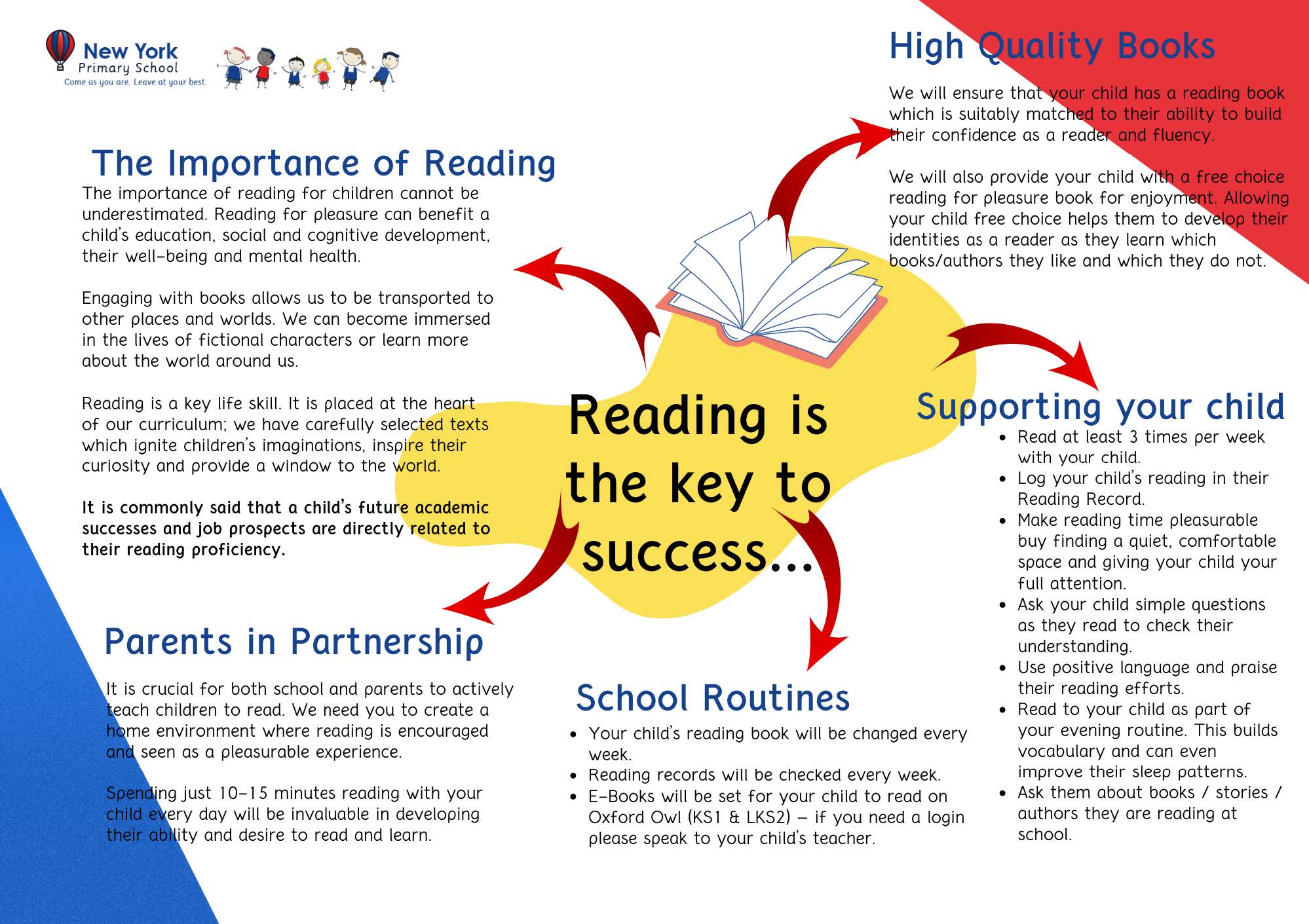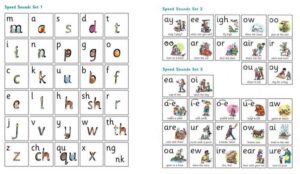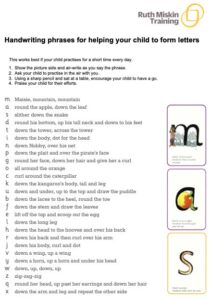Reading and Phonics at New York
Phonics & Early Reading at New York Primary School
Being able to read is the most important skill children will learn during their early schooling and has far-reaching implications for lifelong confidence and well-being. As a school we want our children to develop a love of reading and sharing stories. To achieve our goal we use the Read Write Inc Phonics Programme.
Read Write Inc. developed by Ruth Miskin, provides a structured and systematic approach to teaching literacy. It is used by more than a quarter of the UK's primary schools and is designed to create fluent readers, confident speakers and willing writers. At New York Primary School we use Read Write Inc Phonics (RWI) to get children off to a flying start with their Literacy development. Read Write Inc is a method of learning centred around letter sounds and phonics, and we use it to support and encourage children in their reading and their writing.
Reading opens the door to learning. A child who reads a lot will become a good reader. A good reader will be able to read more challenging material. A child who reads challenging material is a child who will learn. The more a child learns, the more he or she will want to find out.
Reading for Pleasure
Our aim is to establish the children as lifetime readers. By providing and building upon solid phonic and early reading foundations our pupils begin to read for pleasure early and this continues throughout school. We want our pupils to enjoy reading and develop a love of reading. At New York Primary School we provide many opportunities for pupils to read for pleasure, developing reading as a life skill which supports future success in many areas. Our reading for pleasure opportunities are many and include:
- Regular reading aloud time and sharing of books.
- A wide range of literature being promoted by teachers.
- Teacher are role model readers and share their reading for pleasure examples with pupils
- High quality reading displays and reading areas.
- Class novels used as a basis for English lessons where appropriate.
- Regular opportunities for pupils to read self-chosen books silently.
- Whole School Book Days/Weeks and celebration of national book events.
- Home challenges linked to reading.
- Whole School Assemblies where teachers share high-quality books with children.

Understanding Phonics
Reading at New York
At New York Primary School we aim for all our children to become fluent, confident readers who are passionate about reading.
Children who read regularly or are read to regularly have the opportunity to open the doors to so many different worlds!
More importantly, reading will give your child the tools to become independent life-long learners.
We can achieve this together through:
- Read Write Inc, a program to help to your child read at school
- Encouraging children to develop a love of books by reading to them daily, at home and at school
- Giving children access to a wide range of books at school and at home
What is Read Write Inc?
Read Write Inc (RWI) is a phonics complete literacy programme which helps all children learn to read fluently and at speed so they can focus on developing their skills in comprehension, vocabulary and spelling. The programme is designed for children aged 4-7.
Children in our Nursery lay down the foundations for reading through phase 1 letters and sounds, teaching them the essential skills required to become lifelong lovers of reading. They include general sound discrimination including environmental sounds, instrumental sounds and body percussion. Rhythm & rhyme focus heavily in the Nursery curriculum, alongside oral blending and segmenting.
We continue teaching RWI to children beyond the age of 7, especially important for those children who need to continue to develop these essential skills.
RWI was developed by Ruth Miskin and more information on this can be found at https://www.ruthmiskin.com/parents/
Parent video: What is Read Write Inc Phonics
https://www.youtube.com/watch?v=sjlPILhk7bQ&list=PLDe74j1F52zSCiOMSn3zQDSzgu9TrbQ1c&index=6
How will my child be taught to read?
We start by teaching phonics to the children in the Reception class. This means that they learn how to ‘read’ the sounds in words and how those sounds can be written down. This is essential for reading, but it also helps children learn to spell well. We teach the children simple ways of remembering these sounds and letters.
When using RWI to read the children will:
- learn 44 sounds and the corresponding letter/letter groups using simple picture prompts
- learn to read words using Fred Talk and sound blending
- Read from a range of storybooks and non-fictions books matched to their phonic knowledge
- Work well with partners
- Develop comprehension skills in stories by answering 'Find It' and 'Prove It' discussion questions
When using RWI to write the children will:
- Learn to write the letters/letter groups which represent 44 sounds.
- Learn to write words by using Fred fingers
- Learn to build sentences by practising sentences out loud before they write
Talking
The children work and talk in pairs so that they:
- Answer every question
- Practise every activity with their partner
- Take turns in talking and reading to each other
- Develop ambitious vocabulary
Progressing through the stages
Children in Year One and Two follow the same format as Early Years but will work on complex sounds and read books appropriate to their reading level. Daily sessions of RWI last up to 1 hour. Once children become fluent speedy readers they will move on to the RWI Comprehension programme.
Five key principles underpin the teaching in all Read Write Inc. sessions:
Purpose – know the purpose of every activity and share it with the children, so they know the one thing they should be thinking about
Participation – ensure every child participates throughout the lesson. Partnership work is fundamental to learning
Praise – ensure children are praised for effort and learning, not ability
Pace – teach at an effective pace and devote every moment to teaching and learning
Passion – be passionate about teaching so children can be engaged emotionally.
Children will be taught how to read as follows:
Before you start to teach your child, practise saying the sounds below. These are the sounds we use to speak in English. Children initially begin using pictures for each sound, this will help children recognise the sound and then form the shape of the sound.
Speed Sound Pronunciation Video
https://www.youtube.com/watch?v=TkXcabDUg7Q&list=PLDe74j1F52zSCiOMSn3zQDSzgu9TrbQ1c&index=4&t=75s
Fred Talk

We use pure sounds making sure not to add in the schwa (‘m’ not’ muh’,’s’ not ‘suh’, etc.) so that your child will be able to blend the sounds into words more easily.
At school we use a puppet called Fred who is an expert on sounding out words! we call it, ‘Fred Talk’. E.g. m-o-p, c-a-t, m-a-n, sh-o-p, b-l-a-ck.
The following video is an example of blending sounds with Fred.
https://www.youtube.com/watch?v=MNyFikwNQTg&list=PLDe74j1F52zSCiOMSn3zQDSzgu9TrbQ1c&index=16
RWI Set 1, 2 and 3
The children are taught the sounds in 3 sets

Step 1:
Set 1 Sounds are taught in the following order together with rhymes to help children form the letters correctly and instantly recognise sounds ready for blending.

https://www.youtube.com/watch v=QD1yuISr3XA&list=PLDe74j1F52zSCiOMSn3zQDSzgu9TrbQ1c&index=14
At this stage we do not use the letter names
Use the link below to support your correct pronunciation of the sounds.
https://www.ruthmiskin.com/en/find-out-more/parents/#lg=1&slide=3
Step 2:
The children are then taught Set 2 Sounds - the long vowels. When they are very confident with all of set 1 and 2 they are taught Set 3 Sounds (alternative spellings)
| Long vowel sound | Set 2 Speed Sound cards Teach these first | Set 3 Speed Sound cards | |
|---|---|---|---|
| ay | ay: may I play | a-e: make a cake | ai: snail in the rain |
| ee | ee: what can you see | ea: cup of tea | e: he me we she be |
| igh | igh: fly high | i-e: nice smile | |
| ow | ow: blow the snow | o-e: phone home | ao: goat in a boat |
| oo | oo: poo at the zoo | u-e: huge brute | ew: chew the stew |
| oo | oo: look at a book | ||
| ar | ar: start the car | ||
| or | or: shut the door | aw: yawn at dawn | |
| air | air: that’s not fair | are: share and care | |
| ir | ir: whirl and twirl | ur: nurse for a purse | er: a better letter |
| ou | ou: shout it out | ow: brown cow | |
| oy | oy: toy for a boy | oi: spoil the boy | |
| ire | ire: fire fire! | ||
| ear | ear: hear with your ear | ||
| ure | ure: sure it’s pure? |
Nonsense words (Alien words)
As well as learning to read and blend real words children will have plenty of opportunities to apply their sound recognition skills on reading ‘Nonsense words’. These words will also feature heavily in the Year One Phonics Screening check in the summer term. These words provide endless opportunities for children to apply and practice their thinking in a range of different contexts.
https://www.youtube.com/watch?v=LbKGLJPp6ww&list=PLDe74j1F52zSCiOMSn3zQDSzgu9TrbQ1c&index=10
How to say the sounds
Step 3:
Within all the RWI sessions/books children will be exposed to red and green words to learn to help them to become speedy readers. Red words are words that are not easily decodable and challenge words to extend children’s vocabulary. Green words are linked to the sounds they have been learning and are easily decodable.
Dots and dashes represent the sound each letter makes.
During the RWI session children will read the book three times and at each new reading they will have plenty of opportunities to practise using their developing comprehension skills. You may have heard your child talking about ‘hold, edit or build a sentence’.
Hold a sentence is an activity that encourages children to remember a whole sentence while focusing on spelling and punctuation.
Build a sentence is to give children the opportunity to create their own sentence to that shows the meaning of a word and edit a sentence allows the children to critique a sentence using their knowledge of spelling, punctuation and grammar. Children complete a longer piece of independent writing, which gives them the opportunity to show off their creativity and to practise their spelling, grammar and punctuation.
To help at home:
Your child will start to bring books home when they are confident readers, relating to their reading stage. You will find they will bring home a phonics based book, this will aid application, speed and fluency- developing reading for meaning! They will also have an E-Book assigned at the appropriate phonics phase.
Children will also bring home a reading for pleasure book for you to share together.
Parent video: Sound blending
https://www.youtube.com/watch?v=MNyFikwNQTg&list=PLDe74j1F52zSCiOMSn3zQDSzgu9TrbQ1c&index=16
Parent video: Reading the digraphs with your child
https://www.youtube.com/watch?v=0pGuwcr08LE&list=PLDe74j1F52zSCiOMSn3zQDSzgu9TrbQ1c&index=13
Parent video: Reading the stretchy sounds with your child
https://www.youtube.com/watch?v=XsrMZZ6lbCI&list=PLDe74j1F52zSCiOMSn3zQDSzgu9TrbQ1c&index=11
Parent video: Reading the bouncy sounds with your child
https://www.youtube.com/watch?v=ui5UXEFD6UQ&list=PLDe74j1F52zSCiOMSn3zQDSzgu9TrbQ1c&index=12
Useful websites for Parents
Please find a list of websites that you may find useful in helping you and your child learn
about phonics. Games and fun activity websites are also included.
https://www.ruthmiskin.com/en/find-out-more/parents/ - Information and resources to
support phonics learning at home
http://www.bbc.co.uk/bitesize/ks1/literacy/phonics/play/ - fun games for the children to play
http://www.ictgames.com/literacy.html - fun games for the children to play
http://www.firstschoolyears.com/ - fun games for the children to play
BBC Bitesize - many games to play covering all areas of the curriculum
Where to find out more information
The following links provide lots of free Read Write Inc. Phonics resources to help your child,
including eBooks, practice sheets and parent films. https://home.oxfordowl.co.uk
https://home.oxfordowl.co.uk/reading/reading-schemes-oxford-levels/read-write-inc-phonics-guide/
Your child can login their own E Book Library here. Please see your child’s teacher for their individual login.
https://www.oxfordowl.co.uk/login?active-tab=students
Each Autumn we hold a parents reading meeting for parents of children in Reception.
In Spring Term of Year One parents are invited to learn about the Key Stage One Phonics Screener.
Please remember, you can always speak to your child’s teacher should you require any clarification.
